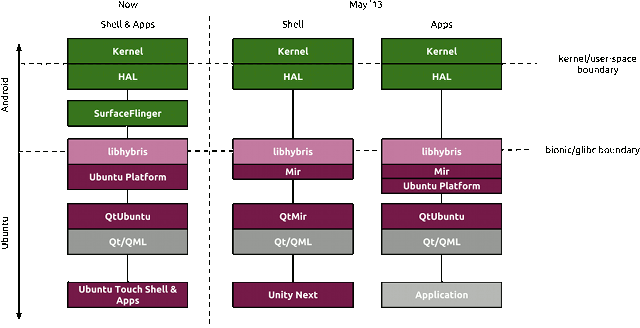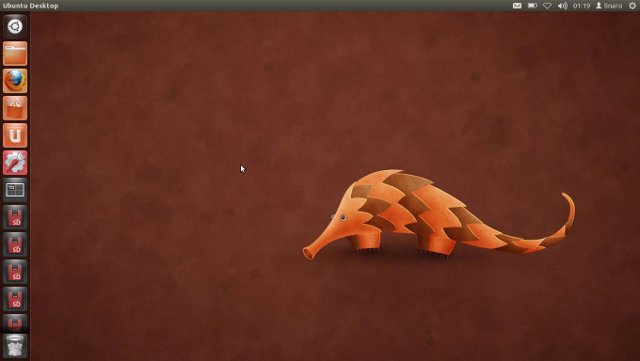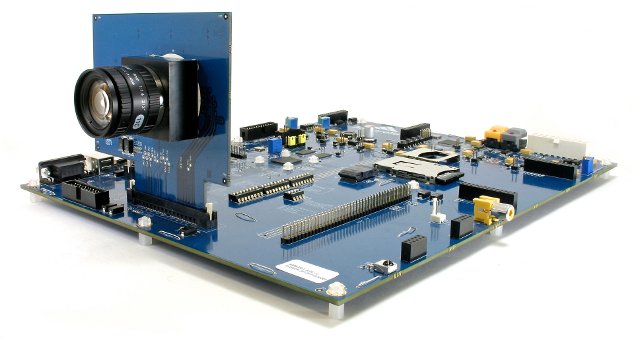The X server is getting old, and many developers complain it’s not an optimal solution anymore due to its (over) complexity, which was why Wayland was developed. However, it turns out Ubuntu will not use Wayland, but instead their own display server called Mir which will be used in all form factors from phones to desktops. Phoronix has provided a quick summary about the key aspects of Mir: Mir is a new display server being developed at Canonical and it is not based on X.Org or Wayland. Android graphics drivers will be supported. Existing DRM/KMS/Mesa/GBM (the open-source Linux graphics drivers) will work. Canonical is pressuring the binary blob vendors to make their drivers compatible. There will be support for legacy X11 applications through an integrated root-less X.Org Server. Canonical will natively support GTK3 and Qt/QML toolkits with Mir. Mir will be used for all form factors from Ubuntu Phones to […]
Ubuntu Linaro 12.11 with 2D/3D Mali-400 GPU Acceleration on ODROID-X Development Board
A few days ago, Hardkernel released the first version of Ubuntu 12.11 (Linaro) with Mali-400 GPU support for their ODROID boards (ODROID-X/X2, ODROID-U/U2). This is still WIP (Work in Progress), but this is one of the few boards together with Pandaboard, Origen and Snowball that can support 2D/3D GPU acceleration in Ubuntu Quantal. Since I have an ODROID-X development board, I decided to give it a try. There are different ways to install it. I chose the way that is most convenient for me (LCD display instead of HDMI), and likely to yield more performance (eMMC instead of SD Card). The current installation instructions to eMMC are extremely cumbersome and you have to go through 5 main steps: Install Android (yes, seriously) in the eMMC Install Ubuntu in the SD Card Install Ubuntu to the eMMC Upgrade Ubuntu to the latest version Install the Mali drivers In this post I’m […]
Open ARM GPU Drivers FOSDEM 2013 Video and Call to ARM Management
As I previously wrote, FOSDEM organizers are slowly uploading FOSDEM 2013 videos. One of the most interesting talk “Open ARM GPU Drivers” is now available. I’ve also uploaded it to YouTube (embedded below) to give it more exposure. Luc Verhaegen has also written a recent blog post entitled “Hey ARM!” where he announces the release of the modified source for Quake 3 Arena demo, and asks ARM to join them in making an open source driver. Open ARM GPU Drivers @ FOSDEM2013 This session covers the following key points: Problem – Binary drivers are mainly designed to run in Android, and it’s very difficult to have proper GPU drivers for Linux, and companies are not interested to release open source drivers or even just documentation, as they are not convinced it will benefit them in any way. Legal – This is actually the main issue, as open sourcing existing driver […]
Linaro Connect Asia 2013 Sessions and Mini-Summits
Linaro Connect Asia 2013 (LCA13) will take place in Hong Kong again this year, on March 4 – 8, 2013 at the Gold Coast Hotel. Linaro recently published the event schedule, with sessions focused on kernel, power management, toolchain, graphics and multimedia, platform, validation, and QA tracks, as well as 2 mini-summits: Linaro Enterprise Group (LEG) which will discuss about ARM server, and an as-yet-unannounced group (Linaro Networking Group?) within Linaro. There will also be hacking sessions each day (except on “Demo Friday”) where you can certainly expect to learn many useful skills/tips. I’ve selected 2 sessions or keynotes per day that I think could be especially interesting. Some of the sessions don’t have description yet, so even if they might seem interesting I’ve usually skipped those. Monday 12:00 – 13:00 – Low Level Virtual Machine (LLVM) Update The Toolchain Working Group started working on LLVM in January 2013. Come […]
Quake 3 Arena Demo Using Lima Driver is (Slightly) Faster than Mali-400 Binary Driver
As mentioned previously, Luc Verhaegen was to give a talk about the status of Lima driver (reverse-engineered Mali-200/400 GPU driver), as well as other GPU open source implementation, at FOSDEM 2013. This is now done, and part of the talk included a demo of Quake 3 Arena (q3a timedemo) running on tablet featuring AllWinner A10 SoC (Cortex A8 @ 1Ghz, Mali-400MP1 GPU @ 320 Mhz, and DDR3 memory @ 360MHz), and a 1024×600 LCD. The fact it works is already a great achievement in itself, but this demo runs at 47.2fps with Lima driver (limare), whereas it can be rendered at 46.2fps using the binary driver. In his blog, Luc also explains that apart from being 2% faster, it also uses 3% less cpu than the binary driver! Take that binary blobs! There’s still more work to do however, as this Quake 3 Arena port is not playable yet for 2 […]
Embedded Linux Conference 2013 Schedule
The Embedded Linux Conference (ELC 2013) will take place on February 20 – 22, 2013 at Park 55 Hotel in San Francisco, California. ELC consists of 3 days of presentations, tutorials and sessions. There will be over 50 sessions during those 3 days. I’ll highlight a few sessions that I find particularly interesting, and that did not get presented at ELCE 2012 (AFAICR). February 20 11:00 – Anatomy of the arm-soc git tree by Olof Johansson, Google We are now two years into the new maintainer model for ARM platforms, and we have settled down into a workflow that maintainers have adjusted well to. Still, when new platforms arrive, or when maintainer ship changes hands, there’s sometimes a bit of ramp-up in getting used to how we organize our git tree and how we prefer to see code submitted to fit that model. This presentation will give an overview of […]
GPUs Comparison: ARM Mali vs Vivante GCxxx vs PowerVR SGX vs Nvidia Geforce ULP
I’m always very confused when it comes to comparing GPUs in different SoCs, and I could not really find comparisons on the web, so I’m going to give it a try even though, as you’re going to find out, it’s actually quite a challenge. There are mainly 4 companies that provide GPUs: ARM, Imagination Technologies, Vivante and Nvidia. [Update: Two comments mentioned Qualcomm Adreno and Broadcom VideoCore are missing from the list. Maybe I’ll do an update later]. Each company offers many different versions and flavors of their GPU as summarized below. ARM Imagination Technologies Vivante Nvidia Mali-400 Series: Mali-400 MP Mali-450 MP Mali-600 Series Mali-T604 Mali-T624 Mali-T628 Mali-T658 Mali-T678 PowerVR SGX Series 5: SGX520 SGX530 SGX531 SGX535 SGX540 SGX545 PowerVR SGX Series 5XT: SGX543MP1-16 SGX544MP1-16 SGX554MP1-16 PowerVR SGX Series 6: G6200 G6230 G6400 G6430 G6600 2D graphics: GC300 GC350 3D graphics: GC400 GC800 GC1000 GC2000 GC4000 ULP GeForce (Tegra […]
Ambarella Unveils A9 4K Ultra HD Camera SoC
Ambarella has recently today introduced the A9 camera System on Chip (SoC) with support for the new 4K Ultra HD video standard in order to power next generation of mirrorless, sports, and digital still cameras. Ambarella A9 SoC features two ARM Cortex A9 cores (surprisingly), as well as Ambarella Image and Video DSPs. The A9’s video features include video timelapse modes, capture of high-resolution still images during video recording, Electronic Image Stabilization (EIS), and burst capture of up to sixty 12-megapixel still images per second. Ultra-wide angle and small form factor lenses are supported with full lens distortion correction. The A9 also support High Dynamic Range (HDR) video. Ambarella A9 Feature Summary: 4K Ultra HD video recording @ 30 fps. High definition video recording at 720p @ 240fps and 1080p @ 120fps. Burst mode support for still image capture of over 700 Megapixels per second. Multi-exposure High Dynamic Range (HDR) […]










